

SlipIt - a tool review continued...
Slipit vs. Wax - Test II
Maybe Slipit is more durable
and lasts longer when applied to machine surfaces than wax? As
I mentioned before, I don't have a stock feeder to level the
playing field unless you count the planer - yeah! That's it!
The planer!
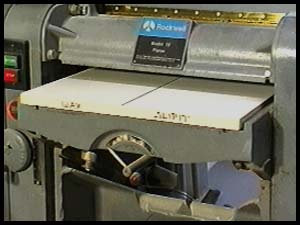 |
But Jim, your planer bed hasn't seen
the light of day for years. This is true, I use a melamine auxiliary
bed because I'm absolutely convinced it reduces snipe, whether
you have a little baby planer or a half-ton unit. (Maybe we'll
look at snipe for a future article?) It has other advantages too. When the wax coating starts to wear through and the stock stops feeding, it's a simple matter to slide the bed out, re-wax it and slide it back in without losing my depth setting. |
I guess what I'm saying, this next test might not apply to you but it means a lot to me considering the way I work a planer. This time I prepared four oak boards about the same size and weight, jointed them flat on one face and rough planed them to slightly less than an inch - the point where they were mostly clean on both sides. I then split my planer's auxiliary bed down the middle with a felt marker, applying wax to one side and Slipit to the other. The plan was to feed two boards over and over, one down each side and see which side started to grab first. Every fifth pass through the planer, 1/64th would be removed, the boards flipped over and fed through another five times.
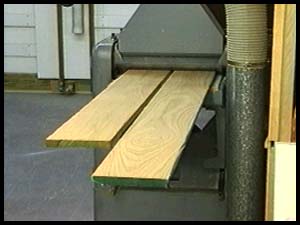 After about 35 passes through
the planer, neither board had begun to grab and I was almost
prepared to call the contest a draw. I really didn't want to
plane the boards past 3/4" and I was getting tired.This
was hard work!
After about 35 passes through
the planer, neither board had begun to grab and I was almost
prepared to call the contest a draw. I really didn't want to
plane the boards past 3/4" and I was getting tired.This
was hard work!
Around pass number 42, the Slipit side started to hang. (Photo at left) By pass number 45, even with a fresh application of Slipit, it wouldn't go through the planer without assistance. You know, pushing...tugging.
Perhaps the feed rollers didn't have the same traction on the Slipit side, maybe I hadn't backed off the pressure bar far enough? Maybe, maybe, maybe...:( In all fairness to Slipit, the only recourse was to exchange sides - put the wax where the Slipit had been and apply Slipit to the wax side of the board and repeat the test. Groan...
While cleaning the melamine for planer
test part II, I noticed the Slipit side had several shallow grooves
pressed into the surface. In a couple of the grooves were little
deposits of accumulated sawdust I call 'sleeks'. We've all seen
them; they're the little nubs of sealer that start to collect
on sandpaper when we're trying to smooth lacquer. Sometimes glue
starts them on our hardblocks. In any case, soon after the sandpaper
is doomed to collect more and will shortly be clogged beyond
usefulness. Somehow, in the mindless repetition of feeding board
after board into the planer, I missed something.
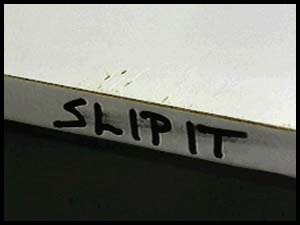 |
During the second test with oak boards three and four, the Slipit started to grab again around pass number 37. I noticed the sleeks forming at the mouth of the planer and when they broke free, they would groove the melamine. Re-applying Slipit to that side had no effect but manually scraping the sleeks off the melamine stretched the Slipit's usefulness to around 53 passes. Many more and the grabbing was so bad I was in danger of burning the knives. In both tests the wax performed flawlessly. |
The final test in the Slipit evaluation was the easiest to perform and the most revealing - not so much about Slipit, but about paste wax. It opened my eyes.
Most of us have been there, our shop
is in the garage or outbuilding, or maybe even in the basement.
Our machines are cool and because of dust or fumes, we open the
windows and doors to get some fresh air. When it's warmer and
more humid outside, the differential between the temperature
of the tools and the 'fresh' air is so great 'dew' starts to
form on our precious cast iron. Moments later our tools begin
to rust.
For me, the solution has been to keep my tools waxed against
the elements. This never worked for extreme situations like cold
soda cans or monsoons <g> but it seemed OK for regular
shop duty. Any rust which arose was easily removed with an orbital
sander.
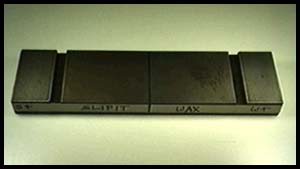 |
The method for this test involved coating a piece of cast iron with both Slipit and wax and then artificially cooling it in the refrigerator. From the fridge, it's placed in a humid environment where water will condense out of the air and onto the surface of the cast iron. Luckily, putting my 66 on top of the crisper shelf wasn't necessary. A friend gave me an old tablesaw years ago and it has an unusual outfeed wing I detached for this test. |
Within 1/2 hour the rust started to appear. 1 1/2 hours later the tablesaw wing was dry.
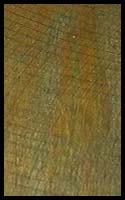 Slipit (Heavy Film) |
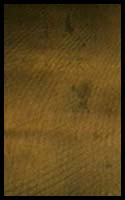 Slipit (Normal Film) |
| This closeup shows the extreme left side of the cast iron. On this section, Slipit was gooped on as heavy as I could apply the paste. The streaks of rust you see are where I didn't goop it on heavy enough to prevent oxidation of the metal. | This is a closeup of the left/middle side of the table wing. It's coated with thin but liberal coating of Slipit - more than I would personally prefer for my tablesaw. |
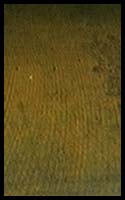 Wax (Normal Film) |
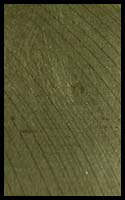 Wax (Un-buffed Film) |
| The right/ middle section of the tablesaw part was coated with wax according to the method I've used for years. Although it wasn't as bad as the Slipit, it's still heavily rusted. I'm sure the extremity of the test was more than what one would normally expect in normal usage, but I wasn't impressed. The thin coating of wax wasn't much protection either. | This final photo shows the far right section of the cast iron sample. Wax was applied as usual but this time I didn't buff off the excess down to a thin film but left the coating thick. Even after a complete coating of the shower-stall dew, hardly a speck of rust could be found. |
Conclusion
Slipit might have some uses to some people, but try as I might I couldn't find one for my shop. Even if I could get around the blotchiness caused by Slipit absorbed into wood parts, it just didn't match up to wax as a shop lubricant or rust preventer. To be fair, it does smell better than wax. Those of you who are sensitive to the petroleum distillates in wax might consider Slipit as an alternative.
I guess what surprised me the most was the effectiveness of wax as long-term rust inhibitor when tools are put in storage or are infrequently used in a garage-type workshop. Given the severity of the 'dew' test, it would seem paste wax is a viable alternative to a heavy Cosmoline treatment with non of the inherent problems in getting the tool ready for use.
For those of you finicky about protecting your precious cast iron, simply apply the wax after your day in the shop and skip the buffing stage. It will be shiny new and ready for buffing when you return, cold soda cans and monsoons notwithstanding...:)
Respectfully submitted,
Jim Mattson
Postscript:
Several days before posting this review I previewed it for the
nice folks at Slipit. They expressed some concern about which
flavor of Slipit I used for the melamine sliding test so I re-performed
it using the paste Slipit instead of the aerosol can. The results
were the same.
If you have any questions or comments about this article, please feel free to email me directly.